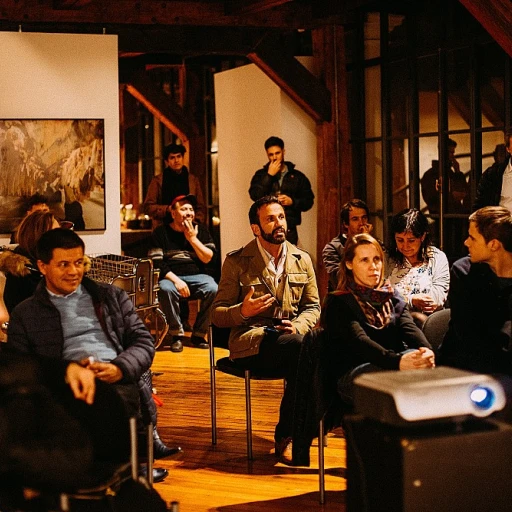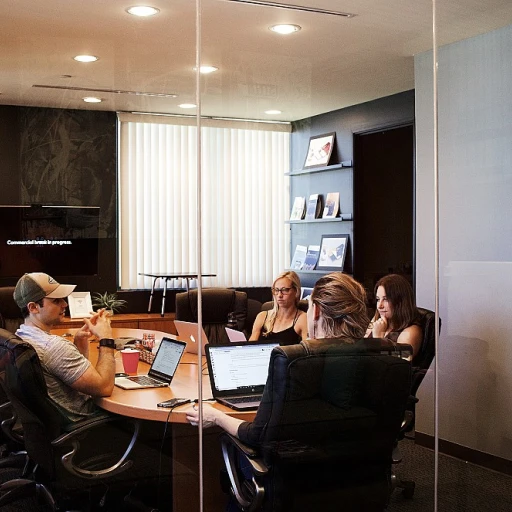Understanding New Zealand's Business Culture
Recognizing the Unique Aspects
In the vibrant landscape of New Zealand’s business environment, understanding the local culture plays a crucial role in effective meetings. One of the defining traits is communication tools beyond email, which are essential in fostering a cohesive team dynamic. Communication tends to be straightforward and respects the perspectives of all team members.
New Zealand businesses value inclusivity and collaboration, ensuring that everyone has the opportunity to contribute to the discussion. This mindset helps streamline the decision-making process and encourages team members to proactively engage in meetings and express their ideas regarding the meeting's agenda and tasks.
When conducting meetings, it's important to design an agenda that highlights the priorities while being flexible enough to accommodate the diverse viewpoints of the group. Efficient use of meeting time allows for adequate discussion of agenda items, enabling teams to progress through stages without feeling overwhelmed by lengthy discourse. As meetings come to a formal close, it’s vital to ensure that all group members are in agreement on the projected action items and follow the meeting notes captured for reference.
Setting Clear Objectives
Establishing Clear Meeting Goals
In the fast-paced world of New Zealand business, setting clear objectives for your meetings is crucial to ensure productivity and alignment. When team members come together, it's essential to have a well-defined agenda that outlines the purpose and desired outcomes of the meeting. This not only helps in maintaining focus but also maximizes the efficiency of the meeting time.
Start by identifying the key agenda items that need to be addressed. Whether it's a project kickoff or a regular team meeting, having a structured meeting agenda allows group members to prepare in advance, ensuring that the discussion stays on track. Clearly defined objectives also facilitate better decision making and help in prioritizing action items.
Consider the following steps to set clear objectives:
- Define the Purpose: Clearly articulate what you aim to achieve by the end of the meeting. This could range from brainstorming new ideas to finalizing project tasks.
- Outline Agenda Items: List all the topics that need discussion, ensuring they align with the meeting’s goals.
- Allocate Time Wisely: Assign specific time slots for each agenda item to keep the meeting on schedule and respect everyone’s time.
- Identify Desired Outcomes: Clearly state what decisions need to be made or what action items should be assigned by the meeting’s conclusion.
By setting clear objectives, you create a framework that guides the meeting process, making it easier for team members to follow along and contribute effectively. This approach not only enhances the meeting structure but also ensures that all members feel their time is valued and their input is crucial to the success of the project.
For more insights on effective communication strategies, you might want to explore effective communication tools beyond email.
Summarizing Key Points
Summarizing the Essence of Your Meeting
As your meeting in a New Zealand company draws to a close, dedicating time to summarizing the key points covered is instrumental in ensuring everyone is on the same page. This practice not only fortifies your group's understanding of what was discussed but also aligns the team on the action items going forward.- Reiterate Core Decisions: Highlight any major decisions made during the meeting. This reinforces the group members' memory and aids those responsible for decision-making to feel validated.
- Review Action Items: Clearly specify the tasks assigned to team members. Mention who is responsible for which part of the project, stress on deadlines, and follow the process for accountability.
- Note Agenda Items: Revisit the meeting agenda to ensure all discussed points were adequately covered. This minimizes the risk of overlooking important topics that require attention.
Assigning Action Items
Delegating Tasks for Effective Follow-Up
In any New Zealand company, ensuring that meetings lead to tangible outcomes is crucial. Assigning action items is a vital step in this process. When the meeting agenda is structured to include clear objectives, it becomes easier to identify what tasks need to be completed post-meeting. This step not only ensures accountability but also keeps the team aligned with the project goals.
During the meeting, it's important to clearly outline each action item and assign it to specific team members. This helps in maintaining a smooth workflow and ensures that everyone knows their responsibilities. Using meeting minutes to document these tasks can aid in tracking progress and keeping everyone informed. Here’s how you can effectively assign action items:
- Identify Key Tasks: Based on the agenda items discussed, pinpoint the tasks that need immediate attention.
- Assign Responsibilities: Clearly delegate each task to a specific group member, ensuring they understand their role in the process.
- Set Deadlines: Establish realistic timelines for each task to maintain momentum and ensure timely completion.
- Use Project Management Tools: Leverage tools to track progress and facilitate communication among team members.
By following these steps, you create a structured approach to action items that enhances the decision-making process and ensures that the meeting time is utilized effectively. This practice not only improves the efficiency of team meetings but also fosters a sense of ownership among members, making them feel more engaged and responsible for the outcomes.
Encouraging Feedback
Open the Floor for Constructive Criticism
After setting the meeting agenda and thoroughly discussing agenda items, it's crucial to allot time at the end of the meeting for feedback from all team members. This process not only boosts morale but also improves future meetings. Gather insights into what worked well, how the meeting structure held up, and where adjustments can be made.- Encourage open dialogue among team and group members to express thoughts on the meeting minutes.
- Promote a safe environment where each person can voice opinions without fear of judgment.
- Note any suggestions on enhancing agenda items for the next board meeting or project kickoff.
Listen to Everyone's Opinions
Each member of the team should leave the meeting feeling they contributed to decision making. For this to happen, it's essential to engage in active listening during this stage.- Facilitate a discussion that includes input from all project team members, ensuring diverse perspectives are captured.
- Make use of meeting notes to track which suggestions are actionable and align with project management goals.
- Ensure discussions are focused on the action item and tasks that were initially outlined.
Conclude with a Summary & Next Steps
Finally, summarize the meeting time, clearly outlining any next steps or action items. This ensures that the discussions and feedback are translated into a tangible plan.- Reiterate the main points covered and document them in the meeting minutes for future reference.
- Assign specific action items, ensuring each member feels clear on their contributions post-meeting.
- Agree on a follow-up structure to review progress on tasks during the next team meeting.
Formal Closure Techniques
Bringing the Meeting to an Official Conclusion
Concluding a meeting effectively in a New Zealand company involves more than just wrapping things up. It’s an opportunity to reinforce the structure and ensure that all the agenda items have been thoroughly addressed. As the meeting time approaches its end, it's important to employ formal closure techniques that resonate with the company culture and leave team members feeling engaged and informed.
Summarize and Review: Begin by reiterating the key points discussed during the meeting. This helps solidify the meeting minutes for everyone in attendance, ensuring all important agenda items have been fully covered. Summarizing helps group members to align their understanding and provides a clear pathway moving forward.
Assign Action Items: Make sure all action items are clearly assigned to specific team members. This stage reinforces responsibility and accountability, aligning with effective project management practices. Every action item should have a designated owner and a timeline for completion, fostering a strong follow-through process.
Encourage Feedback: Engage your team by inviting feedback on the meeting's process and structure. This not only helps in decision making but also ensures that meetings are evolving to suit the team’s work dynamics. Feedback can improve future meetings and help optimize the project kickoff and other stages.
Formal Closing Remarks: As the meeting draws to a close, the formal closing should include acknowledging the efforts of participants and reviewing the group’s achievements. This stage team members can affirm their commitment to the tasks ahead. Ending with a thank you reinforces a positive environment and encourages continued collaboration.











